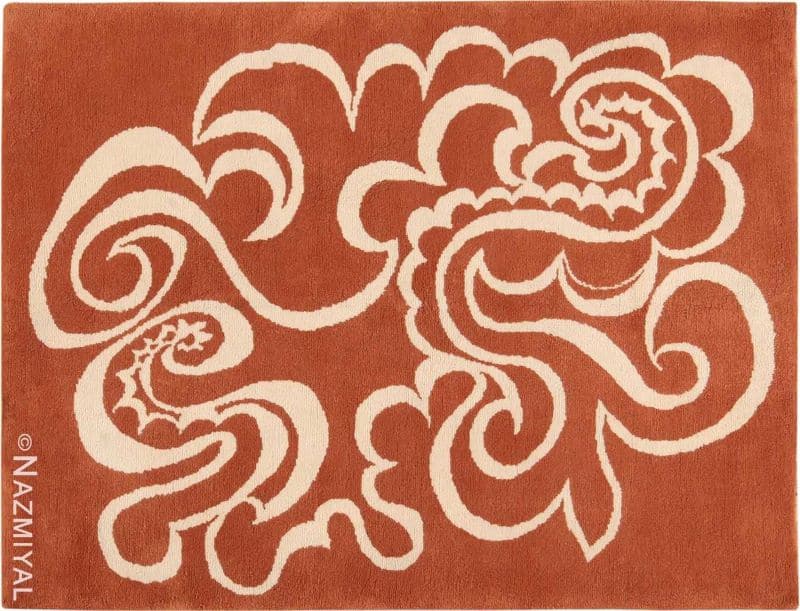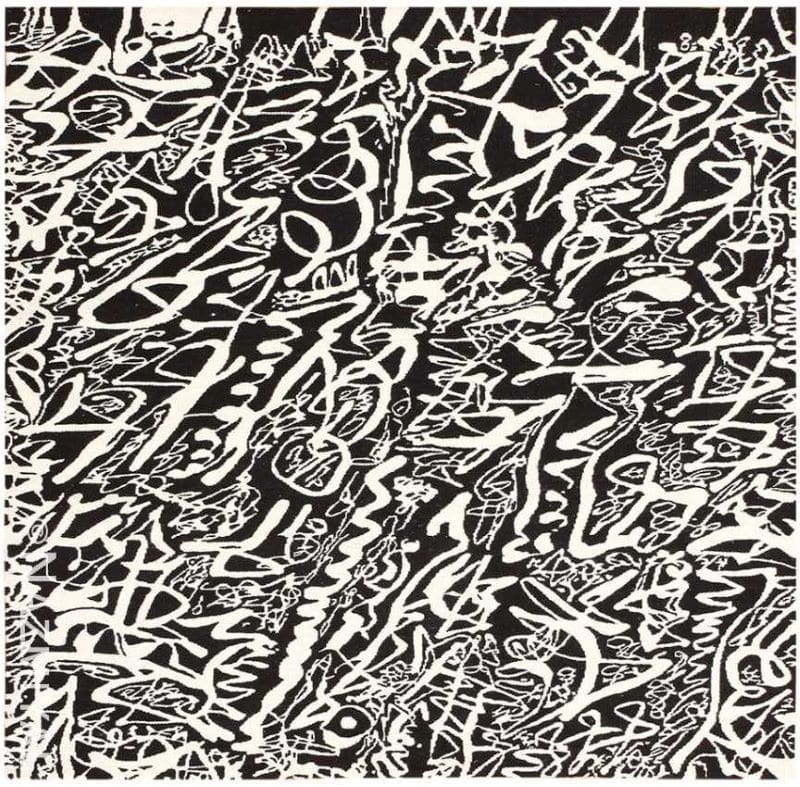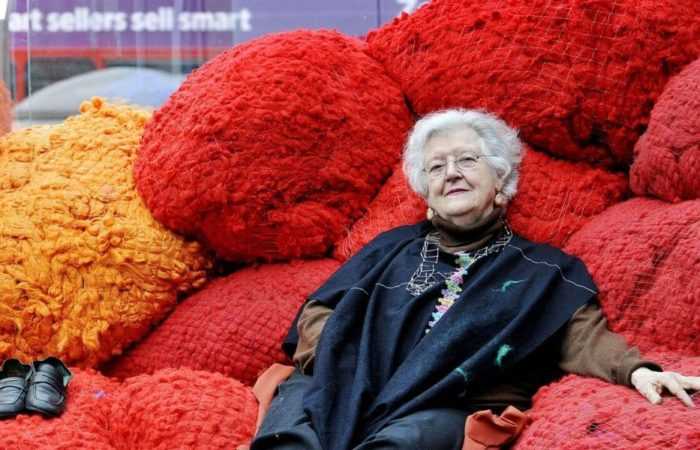MoMA Exhibition Spotlight: Inventing Abstraction
As a staring point – What is “Abstraction” in art?
“Abstraction” in art refers to a style or approach where the artist does not attempt to represent a realistic depiction of visual reality. Instead, they use shapes, colors, lines, and forms to create a composition that may be based on emotions, ideas, or concepts. In abstract art, the focus is on the artist’s expression and the visual elements rather than depicting recognizable objects or scenes.
There are various forms of abstraction in art:
- Pure Abstraction: Artworks that have no connection to the visible world and are entirely non-representational. They are created using elements like lines, shapes, colors, and textures to generate a visual language of their own.
- Semi-Abstraction: Artworks that are partly recognizable but still incorporate abstract elements. Some aspects may resemble real-world objects, but the overall composition is not meant to be a faithful representation.
- Cubism: A significant movement in the early 20th century, where artists like Pablo Picasso and Georges Braque depicted objects from multiple viewpoints, breaking them down into geometric forms.
- Abstract Expressionism: A prominent movement that emerged in the mid-20th century, characterized by spontaneous and emotional expression through non-representational forms. Artists like Jackson Pollock and Mark Rothko were notable figures in this movement.
- Op Art: Short for Optical Art, it uses optical illusions and visual effects to create the perception of movement or vibration through patterns and colors.
- Minimalism: A style that seeks to reduce art to its essential elements, often using simple geometric forms, monochromatic palettes, and clean lines.
Abstraction in art offers a vast space for artists to experiment with concepts, emotions, and the relationship between elements, allowing viewers to interpret the work subjectively and engage with it on a more personal and imaginative level.
What is an example of abstraction in art?
An excellent example of abstraction in art is the famous painting “Composition VII” by Wassily Kandinsky. This painting, created in 1913 during the height of the abstract art movement, is an iconic representation of non-representational art.
In “Composition VII,” Kandinsky completely departs from depicting recognizable objects or figures. Instead, he focuses on the interplay of colors, shapes, and lines to evoke emotions and provoke thought. The artwork is a complex arrangement of geometric forms, curves, and vibrant colors, creating a visually stimulating and dynamic composition.
Kandinsky was a key figure in the development of abstract art and believed that colors and shapes could communicate emotions and spiritual ideas directly to the viewer. His work “Composition VII” is a remarkable example of how abstraction allows artists to convey meaning and emotions through pure visual elements without relying on recognizable imagery. The painting encourages viewers to explore their own interpretations and emotional responses, making it a powerful and influential work in the history of abstract art.
What are the abstraction elements of art?
Abstraction in art involves using various visual elements to create non-representational or semi-representational compositions. These elements are the building blocks that artists manipulate to convey their ideas, emotions, and concepts.
Here are some of the key abstraction elements of art:
- Shapes: Geometric shapes (e.g., circles, squares, triangles) and organic shapes (irregular, flowing shapes found in nature) are used to create visual forms in an abstract artwork.
- Colors: The use of color is central to abstraction. Artists choose and arrange colors to evoke emotions, set a mood, or create a harmonious or contrasting visual experience.
- Lines: Lines can be used to define shapes, create patterns, suggest movement, and guide the viewer’s eye throughout the artwork.
- Texture: Texture refers to the surface quality of an artwork, whether it’s smooth, rough, glossy, or matte. In abstraction, artists can use texture to add depth and tactile interest to the composition.
- Form: In abstract art, form refers to the three-dimensional aspect of an artwork, even though the artwork itself may be two-dimensional. Artists use form to give volume and substance to their abstract creations.
- Space: Space is the area within and around the artwork. In abstraction, artists manipulate space to create a sense of depth, perspective, and visual balance.
- Value: Value is the degree of lightness or darkness in an artwork. Artists use contrasting values to create visual interest and define shapes and forms.
- Pattern: Repeated elements, motifs, or designs can form patterns in abstract art, adding rhythm and structure to the composition.
- Balance: Artists aim to achieve visual balance in their abstract compositions, distributing elements in a way that feels harmonious and stable.
- Contrast: Contrast involves juxtaposing different elements (e.g., colors, shapes, values) to create visual tension and highlight certain aspects of the artwork.
- Unity: Unity is the coherence and sense of wholeness in an abstract artwork, achieved through the thoughtful arrangement of elements.
Abstract artists employ these elements in various combinations and arrangements, allowing for a wide range of expressive possibilities. The interpretation of abstract art often relies on the viewer’s subjective experience and emotional response to these abstraction elements.
What is a common example of abstraction in art?
A common example of abstraction in art is the use of geometric shapes and forms to represent or convey ideas, emotions, or subjects without depicting realistic or recognizable objects. Artists often employ geometric abstraction to create visually striking and intellectually stimulating compositions. This style of abstraction emerged as a prominent movement in the early 20th century and continues to influence contemporary art.
One well-known example of geometric abstraction is the work of Dutch painter Piet Mondrian. He is famous for his use of straight lines, right angles, and primary colors in his compositions. One of his most iconic works is “Composition with Red, Blue, and Yellow,” painted in 1930.
In this painting, Mondrian reduced the elements to their basic geometric forms: rectangles, squares, and straight lines. The primary colors (red, blue, and yellow) are used with black and white to create a balanced and harmonious composition. Mondrian believed that this reduction to pure abstraction could lead to a universal language of art that transcends cultural and geographical boundaries.
The painting exemplifies abstraction as it does not represent any specific objects or scenes from the real world. Instead, it conveys a sense of order, balance, and simplicity through the arrangement of geometric elements and colors.
Geometric abstraction allows artists to explore the inherent beauty and purity of geometric shapes while inviting viewers to engage with the work on a more abstract and intellectual level. It encourages contemplation and interpretation, making it a common and influential example of abstraction in the world of art.
Who were the fist artists to explore abstraction in art?
The exploration of abstraction in art can be traced back to the late 19th and early 20th centuries. Several artists played pivotal roles in pioneering this movement and challenging traditional representational art.
Here are some of the key figures from the art world who were among the first to explore abstraction:
- Wassily Kandinsky (1866-1944): Widely regarded as one of the pioneers of abstract art, Kandinsky was a Russian painter and art theorist. He believed in the spiritual power of art and sought to express emotions and ideas through non-representational forms. His early works featured a blend of representational and abstract elements, but he gradually moved towards pure abstraction. His painting “Abstract Watercolor” (1910) is often cited as one of the first purely abstract artworks.
- Kazimir Malevich (1879-1935): Malevich was a Russian avant-garde artist and a prominent member of the Suprematist movement. He explored geometric abstraction, reducing art to basic geometric shapes, particularly the square and the circle. One of his famous works is “Black Square” (1915), which is considered an iconic piece of abstract art.
- Piet Mondrian (1872-1944): A Dutch painter, Mondrian was a key figure in the De Stijl movement, which sought to reduce art to its essential elements of geometric shapes and primary colors. He developed a style called “Neoplasticism,” characterized by the use of straight lines and right angles. His work “Composition with Red, Blue, and Yellow” (1930) is an excellent example of geometric abstraction.
- František Kupka (1871-1957): Kupka was a Czech painter who explored abstraction and symbolism in his works. He is considered one of the pioneers of abstract art and is known for his experiments with color and form.
- Robert Delaunay (1885-1941): A French painter, Delaunay, along with his wife Sonia Delaunay, was a leading figure in the Orphism movement, which focused on the use of geometric shapes and vibrant colors to create abstract compositions.
These artists, among others, laid the groundwork for the development of abstract art and its various movements in the 20th century. Their explorations and contributions paved the way for artists to experiment with new ways of expressing ideas, emotions, and spirituality through non-representational forms.
Who are the most famous and iconic abstraction artists?
Several abstraction artists have made significant contributions to the art world and achieved iconic status through their innovative works.
Here are some of the most famous and influential abstraction artists:
- Wassily Kandinsky (1866-1944): Often referred to as the father of abstract art, Kandinsky was a Russian painter and art theorist. He believed that art should express the artist’s inner emotions and spiritual ideas through non-representational forms. His use of color and geometry in works like “Composition VII” and “Yellow-Red-Blue” established him as a seminal figure in abstract art.
- Piet Mondrian (1872-1944): A Dutch painter and a key figure in the De Stijl movement, Mondrian sought to achieve harmony and order through geometric abstraction. His use of straight lines and primary colors in works like “Composition with Red, Blue, and Yellow” exemplifies his pioneering approach to abstract art.
- Kazimir Malevich (1879-1935): A Russian painter, Malevich was a leading figure of the Suprematism movement, which focused on reducing art to its fundamental geometric shapes. His iconic work “Black Square” is considered one of the first purely abstract paintings.
- Jackson Pollock (1912-1956): An American painter and a major figure in the Abstract Expressionist movement, Pollock is renowned for his “drip paintings.” He explored the concept of “action painting,” where he poured, dripped, and splattered paint onto canvas, creating dynamic and expressive abstract compositions.
- Mark Rothko (1903-1970): An American painter associated with Abstract Expressionism, Rothko is known for his large-scale color field paintings. His work often consisted of stacked rectangles of subtly shifting colors, creating an immersive and contemplative experience for viewers.
- Joan Miró (1893-1983): A Spanish painter, sculptor, and ceramicist, Miró was associated with Surrealism and explored abstraction in a playful and poetic manner. His works often featured biomorphic shapes and vibrant colors, as seen in his famous painting “The Harlequin’s Carnival.”
- Klee Paul (1879-1940): A Swiss-German artist, Klee’s works encompassed a wide range of styles, including abstraction. He combined abstract elements with whimsical imagery, creating intricate and imaginative compositions.
- Willem de Kooning (1904-1997): A Dutch-American painter, de Kooning was an influential figure in Abstract Expressionism. His paintings often featured expressive, gestural brushwork and bold colors, exemplified in his iconic series of “Woman” paintings.
These artists, along with many others, have left a lasting impact on the development of abstract art. Their innovative approaches to form, color, and expression have shaped the course of art history and continue to inspire contemporary artists worldwide.
Who are the most famous and iconic abstraction female artists?
Throughout history, female artists have made significant contributions to abstraction and have achieved recognition for their innovative works.
Here are some of the most famous and iconic female abstraction artists:
- Hilma af Klint (1862-1944): A Swedish painter and a pioneer of abstract art, Hilma af Klint is now considered one of the earliest abstract artists, pre-dating many of her male counterparts. She explored spirituality and theosophy in her work, creating intricate and symbolic abstract compositions.
- Georgia O’Keeffe (1887-1986): An American artist known for her large-scale paintings of enlarged flowers, New York skyscrapers, and landscapes. O’Keeffe’s works often have a strong sense of abstraction and use bold colors and simplified forms.
- Lee Krasner (1908-1984): An American painter and a prominent figure in the Abstract Expressionist movement. Krasner’s art often featured energetic and dynamic brushwork, and she played a significant role in the development of abstract expressionism alongside her husband, Jackson Pollock.
- Agnes Martin (1912-2004): A Canadian-American painter, Martin is known for her minimalist and meditative abstract paintings. She worked with subtle lines and grids, exploring themes of serenity, spirituality, and transcendence.
- Louise Bourgeois (1911-2010): A French-American artist, Bourgeois worked across various mediums, including sculpture and installation. Her abstract works often explored themes of feminism, sexuality, and the human condition.
- Joan Mitchell (1925-1992): An American painter associated with the Abstract Expressionist movement, Mitchell’s large-scale paintings were inspired by nature and landscapes. Her bold brushwork and expressive use of color are central to her abstract style.
- Helen Frankenthaler (1928-2011): An American painter and a major figure in the Color Field movement, Frankenthaler was known for her innovative “soak-stain” technique, which involved pouring thinned paint onto unprimed canvas, allowing the colors to blend and soak into the fabric.
- Lygia Clark (1920-1988): A Brazilian artist known for her contributions to Neo-Concretism. Clark’s abstract works often involved interactive and participatory elements, blurring the boundaries between the artwork and the viewer.
- Eva Hesse (1936-1970): A German-American artist known for her sculptural and abstract works, Hesse’s art often incorporated unconventional materials and explored themes of impermanence and vulnerability.
These female abstraction artists, among others, have significantly impacted the art world with their creativity, innovation, and contributions to the development of abstract art. Their work continues to inspire and influence artists and audiences worldwide.
MOMA Exhibit – Inventing Abstraction 1910-1925
It is one of the most notable genres of art. It is colorful, it is stark, it is feminine and phallic. But beyond the depth and nuance of abstract art, there is a spectacular history of interconnections that is the heart of New York’s MoMA Museum of Modern Art’s newest exhibition, Inventing Abstraction.
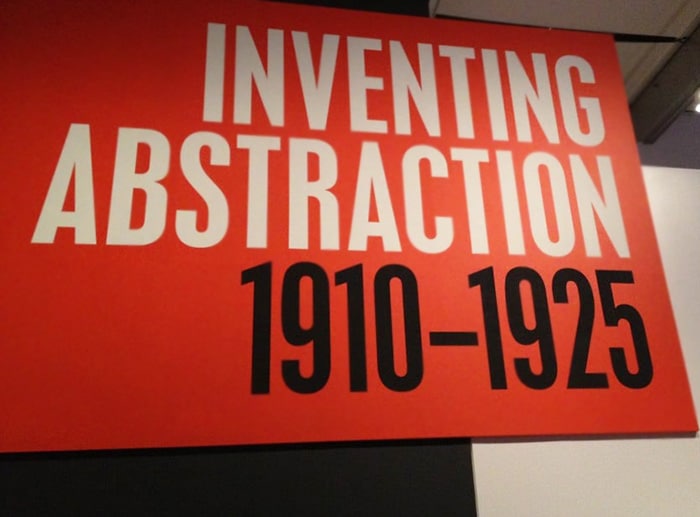
Inventing Abstraction at MoMA Museum
“Abstraction is not about solitary genius, it is the product of network thinking,” reads the exhibition’s welcome wall at the Joan and Preston Robert Tisch Gallery.
What follows is a spiderweb graphic of influencers that spearheaded the watershed movement. Inspired by the first public presentation of pieces in 1912 from European artists like Vasily Kandinsky, Frantisek Kupka and Robert Delaunay, the exhibition is a celebration of the genre’s centennial, but also a show of how similar these individuals were as artists and men.
“For this chart, we looked at their personal lives. We studied the parties they attended, every exhibition they had, who was there, who got in a fight with whom,” explains MoMA assistant Catherine Wheeler, who was involved in the exhibition. “It’s not generally the way you approach artists.”
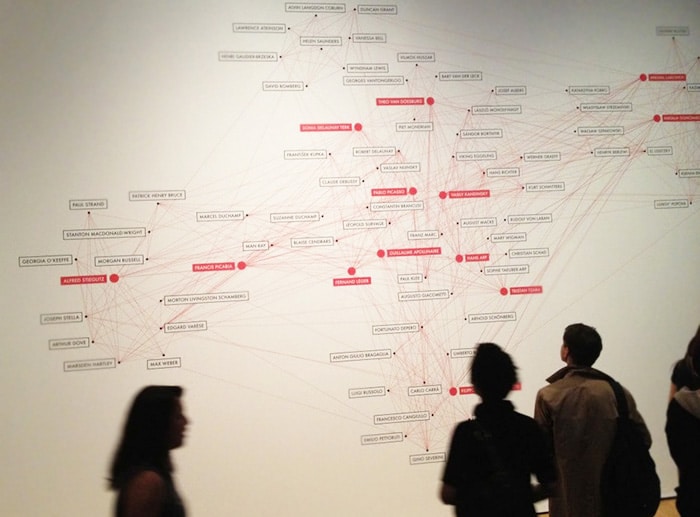
European Map of Abstract Art
As an art form that is defined, in simplest terms, as a departure from reality, MoMA‘s unconventional approach seems warranted. Indeed, during these artists’ lifetime, there was a collective drive toward creating something new that would parallel dramatic developments in technology, science, philosophy and culture.
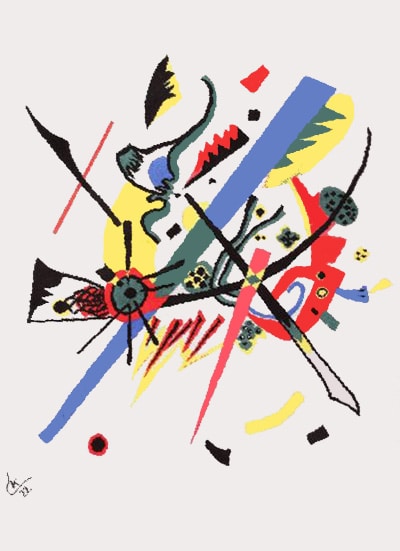
Vintage Wassily Kandinsky Rug Small Worlds #47388
Nazmiyal antique rugs‘ vintage Art Deco rug designed by Kandinsky, is an example of his later abstract creations. But MoMA delved deeper into the artist’s inspiration and the genre’s origins.
“The exhibition is really a close look at this one decade. The watershed moment of a new form of art that was totally original, and totally cutting edge, and created the vocabulary for the art that we know today,” says Wheeler.
Whether it is Picasso’s first and only attempt at abstraction, Woman with Mandolin, the colorful cacophony of Umberto Boccioni’s Dynamism of a Soccer Player, or Georgia O’Keefe’s uber-feminine tones, the exhibition paints a multi-layered portrait of abstract art from across the globe.
With paintings, drawings, books, sculptures, films, photographs, music and poems on display, visitors come away with a much stronger sense of this complex genre. To understand something, one must begin with its roots. With Inventing Abstraction, the MoMA has done just that.
Inventing Abstraction at MoMA opens December 23rd and runs until April 15th.
Here are some great modern art rugs from the Nazmiyal Collection:
This art blog was published by: Nazmiyal Antique Rugs.

